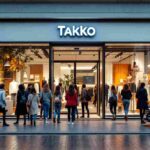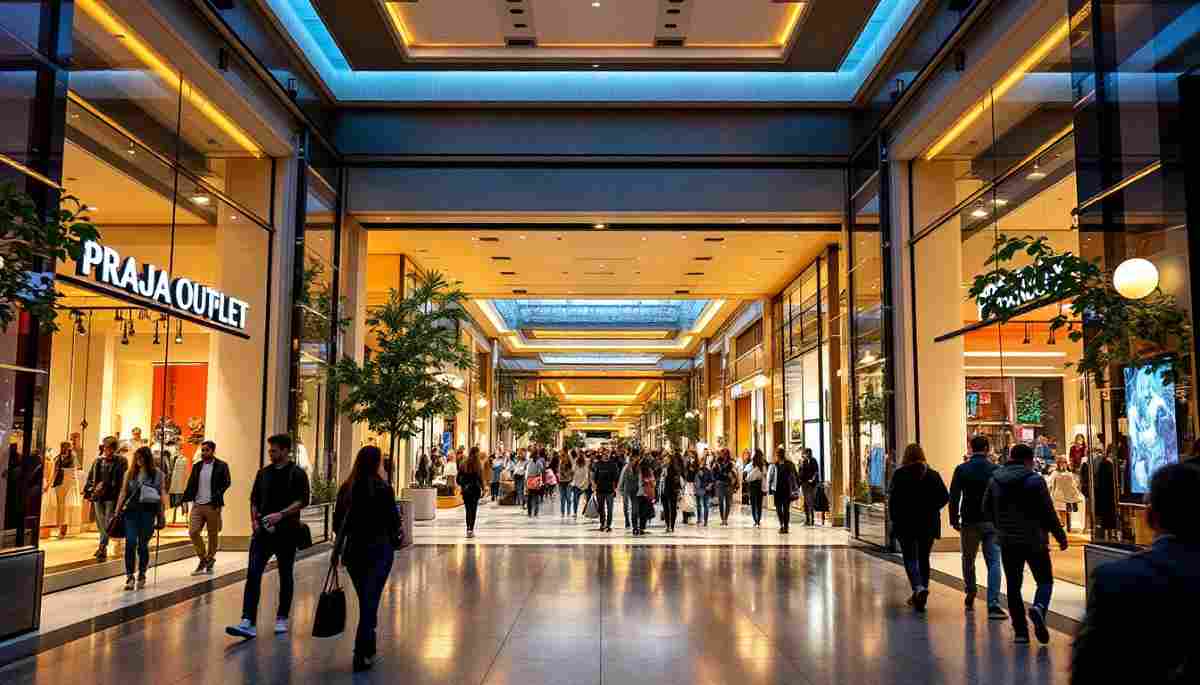The Vogue Fashion Runway has long been an emblem of style, creativity, and the evolution of fashion. This annual spectacle brings forth an amalgamation of artistry and commerce, defining not only the future trends but also celebrating the heritage of fashion itself. In this article, we will explore various facets of the Vogue Fashion Runway, from its historical context to its influence on global trends, and the promising future ahead.
The Evolution of Vogue Fashion Runway: A Historical Perspective
The Vogue Fashion Runway has undergone significant changes since its inception. What began as a modest showcase of Parisian couture has transformed into a global phenomenon. In the early decades, the emphasis was primarily on tailoring and fabric, with designers like Coco Chanel and Christian Dior leading the charge. These trailblazers set the stage for the runway’s potential to redefine style norms.
As fashion evolved through the decades, so did the runway’s presentation. The 1960s and 70s saw the rise of youth culture, which was reflected in bold colors and innovative designs that broke traditional molds. Designers like Yves Saint Laurent challenged the status quo by introducing ready-to-wear collections that changed the fashion landscape forever. Each era profoundly influences the following, showcasing the adaptive nature of fashion and its runways.
In the 1980s, the runway experience became a spectacle in itself, with extravagant shows that blurred the lines between art and fashion. Designers like Thierry Mugler and Jean-Paul Gaultier pushed boundaries with theatrical presentations, incorporating elements of performance art and music. This period marked a shift towards a more diverse representation of beauty and style, as models of various backgrounds began to grace the catwalk, reflecting a broader spectrum of society. The influence of pop culture also surged, with celebrities often taking center stage, further elevating the allure of the runway.
The turn of the millennium brought about a digital revolution, transforming how fashion was consumed and experienced. The rise of social media platforms allowed fashion enthusiasts to engage with the runway like never before, as live streams and instant updates made shows accessible to a global audience. This democratization of fashion not only amplified the voices of emerging designers but also fostered a new generation of influencers who could shape trends from the front row to the comfort of their homes. The runway became a canvas for social commentary, with designers using their platforms to address pressing issues such as sustainability, inclusivity, and cultural appropriation, further enriching the narrative of fashion history.
Iconic Moments That Defined the Vogue Fashion Runway
There have been numerous iconic moments on the Vogue Fashion Runway that have left an indelible mark on the fashion world. From Naomi Campbell’s show-stopping walk in the 1991 Versace show to the awe-inspiring 2018 Met Gala, where fashion met artistry in an exceptional display. Each event encapsulated the essence of its time and resonated with audiences around the globe.
Moments like these not only underline the significance of individual designers but also showcase the transformative power of fashion. Iconic walks, stunning collections, and memorable collaborations have established an unbreakable link between celebrity culture and the Vogue Fashion Runway, making each show a must-watch event.
One cannot overlook the legendary 2007 Victoria’s Secret Fashion Show, where the runway was transformed into a dazzling spectacle of wings, glitter, and high-octane glamour. This show was not just a display of lingerie but a celebration of femininity and empowerment, featuring supermodels like Gisele Bündchen and Adriana Lima, who captivated audiences with their charisma and confidence. The elaborate sets and theatrical performances elevated the fashion show to an entertainment extravaganza, setting a new standard for runway presentations.
Additionally, the 2019 Paris Fashion Week showcased a groundbreaking moment when designer Balenciaga presented a collection that challenged traditional notions of beauty and fashion. Models walked the runway in oversized silhouettes and unconventional materials, sparking conversations about body image and sustainability. This moment not only highlighted the evolution of fashion but also emphasized the industry’s responsibility towards social issues, making it a pivotal point in the ongoing dialogue about inclusivity and innovation in fashion.
Behind the Scenes: The Making of a Vogue Fashion Show
Behind every glamorous fashion show is a world of meticulous planning, creativity, and hard work. The preparation process involves numerous elements, including scouting locations, selecting models, and orchestrating intricate choreography. Every little detail is crucial, as each show tells a unique story.
In the lead-up to a Vogue Fashion show, designers work tirelessly to put together a collection that reflects their vision. This phase involves sourcing materials, constructing garments, and conducting fittings. The entire team, from stylists to lighting technicians, plays an essential role in bringing the designer’s ideas to life, transforming concepts into compelling visuals on the runway.
As the date of the show approaches, the atmosphere becomes electric with anticipation. Rehearsals are held to ensure that models know their cues and that the choreography flows seamlessly. The runway itself is often a work of art, designed to complement the collection while providing a striking backdrop. Lighting designers experiment with various setups, creating moods that can shift from dramatic to ethereal, enhancing the overall experience for the audience. This collaborative effort culminates in a breathtaking spectacle that captivates fashion enthusiasts and industry insiders alike.
Moreover, the role of social media cannot be understated in the modern fashion show landscape. Behind the scenes, digital strategists work to create buzz and engagement, crafting content that will be shared across platforms. Influencers and fashion editors are invited to attend, their presence amplifying the event’s reach. Live streaming has also become a staple, allowing fans from around the globe to experience the show in real-time. This blend of traditional fashion show elements with contemporary digital strategies ensures that each Vogue Fashion show not only showcases the latest trends but also sets the stage for conversations that ripple through the fashion community long after the final model has walked the runway.
Key Designers to Watch on the Vogue Fashion Runway
Many designers have gained prominence through the Vogue Fashion Runway, each bringing their unique flair and innovation. Labels like Balenciaga, Valentino, and Gucci consistently present collections that challenge and excite fashion conventions. Their ability to blend tradition with modernity continues to captivate audiences and shape the future of fashion.
Emerging designers are also making noteworthy impacts. Names like Telfar Clemens, who emphasizes inclusivity and accessibility, are gaining attention for redefining fashion narratives. These designers not only contribute creativity but also embody the changing ethos of consumer expectations, demonstrating the runway’s role as a catalyst for social change.
The Influence of Vogue Fashion Runway on Global Trends
The Vogue Fashion Runway significantly influences global fashion trends, often setting the tone for upcoming seasons. What starts on the Vogue catwalk can quickly transform into runway inspirations worldwide, highlighting the interconnectedness of global fashion culture.
Fashion weeks across the globe look toward Vogue’s styles as a benchmark for creativity. Trends that emerge from these shows, such as specific color palettes or silhouettes, ripple through fashion retailers, ultimately reaching consumers. This cycle demonstrates the vital role that the Vogue Fashion Runway plays in the fashion ecosystem.
Celebrity Appearances: Who Stole the Spotlight?
Celebrities have a unique relationship with the Vogue Fashion Runway, often stealing the spotlight and shifting the focus towards the spectacle of celebrity culture. High-profile appearances elevate the anticipation surrounding each show, transforming models into stars and heightening engagement across social media platforms.
Instances like Rihanna’s unforgettable entrance to the 2018 Met Gala or Lady Gaga’s stunning wardrobe changes during the same event redefine how celebrity culture intersects with fashion. These moments encourage younger generations to explore fashion’s artistic possibilities, showcasing that the runway extends beyond mere clothing—it’s a platform for self-expression and creativity.
Sustainable Fashion: How Vogue is Leading the Charge
The topic of sustainable fashion is increasingly important in today’s industry, and Vogue plays a pivotal role in spearheading this change. Many of the designers featured on the Vogue Fashion Runway are now implementing eco-friendly practices, focusing on reducing waste and utilizing sustainable materials.
Sustainable fashion initiatives also involve raising awareness around ethical production. Vogue’s platform allows designers to showcase their commitment to environmentally conscious practices, emphasizing the significance of sustainable design in modern-day fashion. This paradigm shift is crucial, as consumers become more aware of their impact on the planet.
The Role of Technology in Modern Vogue Fashion Runways
Technology is shaping the Vogue Fashion Runway in unprecedented ways. From digital showrooms to livestreaming events, the integration of technology enhances the viewing experience, allowing a global audience to engage with fashion like never before. Virtual reality and augmented reality are also becoming prevalent, providing immersive experiences that push the boundaries of traditional runway shows.
Moreover, social media platforms play an essential role in shaping audience perceptions and creating buzz around collections. Hashtags, Instagram stories, and TikTok trends all amplify the reach of runway pieces, allowing fashion enthusiasts to interact and engage with designers and brands in real-time.
Analyzing the Color Palettes of the Latest Vogue Collections
Color palettes serve as an essential component of fashion collections, influencing mood, perception, and desirability. The latest Vogue Fashion collections reflect various themes through palette selections, from subdued earth tones to vibrant neon hues, each telling its own narrative.
Designers utilize color psychology to evoke intended emotions, creating collections that resonate with consumers on a deeper level. Analyzing these trends provides insight into overarching societal values and moods, illustrating how fashion mirrors cultural dynamics.
The Future of Vogue Fashion Runway: Predictions and Trends
Looking ahead, the Vogue Fashion Runway is poised for further evolution. In response to changing consumer behaviors and societal shifts, we can anticipate a focus on inclusivity and diversity. The demand for more representative runways is growing, with an emphasis on showcasing a diverse array of models and designers.
Additionally, digital and hybrid formats will undoubtedly shape future shows, as the fashion industry adapts to a post-pandemic world. Enhancing accessibility through these formats will facilitate broader audience engagement, ultimately fostering a more inclusive approach to fashion.
Ultimately, the Vogue Fashion Runway will continue to be a meaningful stage for both established and emerging voices in fashion, reflecting the aesthetics and values of upcoming generations while fostering innovation and change.










